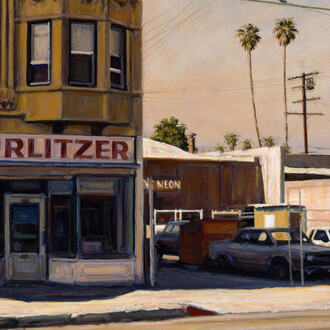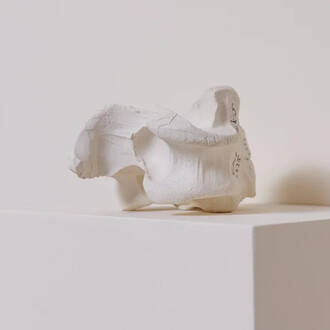The Fine Arts Museums of San Francisco (the “Fine Arts Museums”) are pleased to announce Mary Cassatt at work, a major loan exhibition focused on the great woman Impressionist. The exhibition presents Mary Cassatt (1844–1926) as a fiercely professional artist and an aesthetically radical painter, pastelist, and printmaker who helped shape the French Impressionist movement and transformed the course of modern art. Cassatt produced images of “women’s work”—knitting and needlepoint, bathing children, nursing infants—that also testify to the work of the woman who made them: the marks of her brush, etching needle, pastel stick, and even fingertips. Juxtaposing paintings, pastels, and prints, Mary Cassatt at Work will explore the artist’s activity across media, revealing the daring, iterative methods she used to give form to her ideas. In addition to 93 objects on loan from institutions including the National Gallery of Art, Washington, DC, the Philadelphia Museum of Art, and the Museum of Fine Arts, Boston, the exhibition will present a group of distinguished works–including Cassatt’s magisterial oil portrait of her mother and recently acquired pastels–from the Fine Arts Museums’ collection. The first North American retrospective of Cassatt’s work in 25 years, this exhibition’s sole West Coast venue will be the Legion of Honor.
“Mary Cassatt at Work disrupts any preconceived notion that Cassatt was a sentimental painter and sheds fresh light on her groundbreaking practice”, remarked Thomas P. Campbell, Director and CEO of the Fine Arts Museums of San Francisco. “It is fitting that this exhibition, which celebrates Cassatt’s daring and modernity, will open our yearlong centennial celebration of the Legion of Honor. The Legion of Honor was cofounded in 1924 by another intrepid female pioneer, Alma de Bretteville Spreckels, who shared Cassatt’s deep attachment to French culture and bold vision for the future of art in America".
The exhibition shows Cassatt's multifaceted exploration of modern life, particularly focusing on the roles and inner worlds of women and children during the late 19th century. It begins with groundbreaking Impressionist works portraying women in the audience at the Paris Opera. Moving through Cassatt’s career, the exhibition includes depictions of bourgeois women engaged in various tasks, acute portrayals of children, and revolutionary color etchings inspired by Japanese woodblock prints. It delves into Cassatt’s process, challenging conventional notions of finish, and emphasizing experimentation and revision in both printmaking and painting. Mary Cassatt at Work concludes with the artist’s persistent return to the theme of women and children in the “modern Madonnas” of her final decade. Often stereotyped as sentimental, these pictures in reality reveal Cassatt’s ability to extract infinite variation from a single motif.
“In a sense, the mother-and-child theme was to Cassatt’s final decades what water lilies were to Monet’s or apples to Cézanne’s. Because this motif is and was so freighted with gendered meaning, it’s been too easy to write these pictures off as sweet or sentimental, when in fact they’re formally rigorous, engaged in an ever-deepening conversation with tradition and an ever more experimental handling of paint”, said organizing curator Emily A. Beeny. “Given the social realities of Cassatt’s time, it’s perhaps useful to reflect on the fact that these works are all, in some sense, brought to us by Cassatt’s own childless state. The ambition and scope of her career were, alas, quite incompatible in the late 19th century with marriage and childbearing, even for a woman of her elevated social class”.
Opening the program presented in celebration of the Legion of Honor’s centennial, Mary Cassatt at work runs from October 5, 2024 through January 26, 2025. The exhibition is organized by Jennifer A. Thompson, Gloria and Jack Drosdick Curator of European Painting and Sculpture and Curator of the John G. Johnson Collection, and Laurel Garber, Park Family Assistant Curator of Prints and Drawings, at the Philadelphia Museum of Art, in collaboration with Emily A. Beeny, Chief Curator of the Legion of Honor and Barbara A. Wolfe Curator-in-Charge of European Paintings at the Fine Arts Museums.
Mary Cassatt (1844–1926) was among the leading figures of the French Impressionist movement and the most celebrated woman artist of her era. Initially trained at the Pennsylvania Academy of Fine Art, Cassatt pursued further studies in Europe, developing exceptional draftsmanship uncommon for women artists of her era. Her early submissions to the Paris Salon were accepted, but as her style grew more radical, her reception waned within the academic art establishment. Edgar Degas invited her to exhibit with the Impressionists in 1879, marking a significant turning point. Over the years, she contributed to four of the Impressionists’ famed group exhibitions and became an ambassador for the movement in the United States. Cassatt's focus on the mother-and-child theme and her engagement with European Old Master precedents earned her patronage from American collectors. She painted her final pictures in 1915 and showed a group of them at an exhibition in New York supporting women’s suffrage, a cause to which she devoted considerable time and energy in her later years, even as she went progressively blind.















